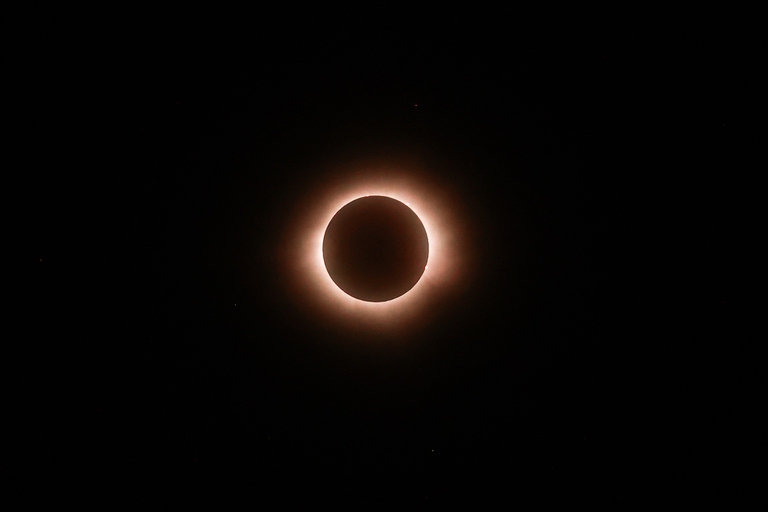https://www.lifegate.it/eclissi-stati-uniti-rinnovabili
- |
- A total eclipse darkened the North American sky for several minutes:an important test for the stability of the electricity system powered by renewable energy.
- Part of the energy has been replaced by gas and hydroelectricity.
THE'total eclipse which millions of people witnessed between Mexico, United States and Canada it was certainly a joy for many:first of all, the astronomers who had the opportunity to better study the solar corona, and then for those who, with their noses in the air, saw the Moon progressively obscuring the Sun, until it completely covered it.An eclipse of this type has been missing in Italy since 1961 (and the next total one will be in 2081).
But the eclipse over North America has significance also a test for an economy powered by renewable energy:in fact, although solar panels don't emit greenhouse gases and don't worsen air quality like fossil fuel power plants do, solar energy has its challenges.In particular, when the sun is not shining, there is no energy.This isn't just a problem during a solar eclipse, of course.

30% of Texas' electricity is photovoltaic
The eclipse reaches “totality” when the Sun is completely blocked by the Moon, a phase that usually lasts for a few minutes.But a partial eclipse can persist for several hours.And as solar generation declines, electricity demand is expected to increase.This type of supply-demand imbalance can lead to power outages.
According to the National renewable energy laboratory (Nrel), all 50 states experienced some degree of disruption to solar energy production during the eclipse.They range from 93 percent of the peak power of solar panels in the Texas grid, up to a reduction of 71 percent in the eastern power grid and as much as 45 percent in the western one.
The largest solar eclipse in the same area there was in 2017, seven years ago, and in the meantime, again in that area, photovoltaic installations have tripled.On a sunny day, 30 percent of the energy that powers Texas comes from the solar.For this reason, the eclipse of April 8, 2024 provided valuable information to the operators of the Texas state power grid:for 4 minutes, many GW of solar were darkened.
A good test ahead of extreme climate events.This eclipse, in fact, has therefore made us understand what happens when renewable energy is hindered from unpredictable events.Unfortunately, fossil fuels have still played a central role in this:there was a surge in gas and other hydropower that covered the nearly 90 GW of solar PV impacted by this event.
The solar eclipse gave fossil fuels a boost
Approximately 32 million people in the United States live within five kilometers of a so-called peaking power plant. peaker power plant), a system that usually runs on gas and turns on during peaks in energy demand, such as that expected for a solar eclipse.The “peakers” are some of the most polluting power plants in the country and most of them is found in poor communities largely inhabited by African Americans.
As an alternative to peak power plants, then, there are hydroelectric power plants:Pumped hydroelectric energy storage is set to make up for 42 percent of the lack of solar power during the eclipse in Texas.It involves pumping water from a lower altitude to a higher altitude and running it through a turbine to generate electricity.

Increase storage capacity
The last time a total eclipse occurred in the United States, in 2017, gas replaced most of the lost solar energy.But a lot has changed since then.For one thing, the recent eclipse affected a much larger area.And then, solar energy became the source of electricity cheapest in history:the United States has much more, about 2.5 times 2017 solar generation capacity.
Increase the capacity to store renewable energy so always having a reliable supply is one of the biggest challenges facing electricity networks today.The solar eclipse is just one test of how ready the United States is to face this challenge.Fortunately, we are going in this direction:Battery storage in the United States went from 0.6 GW during the last solar eclipse to the current 15.4 GW.




